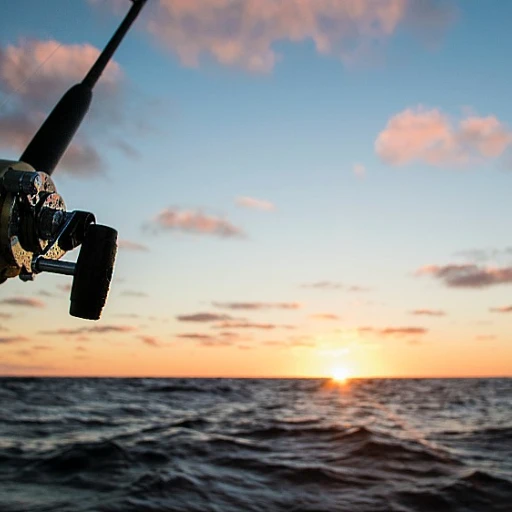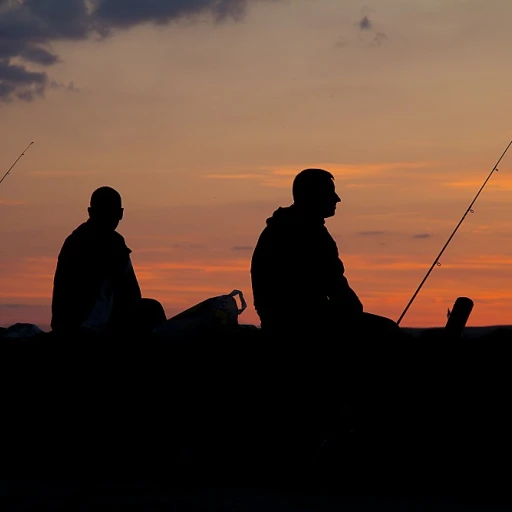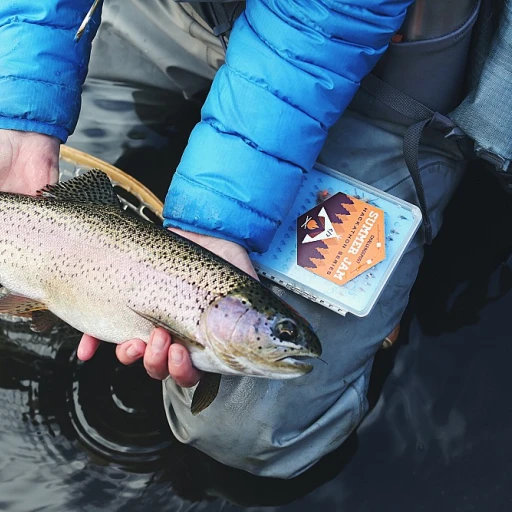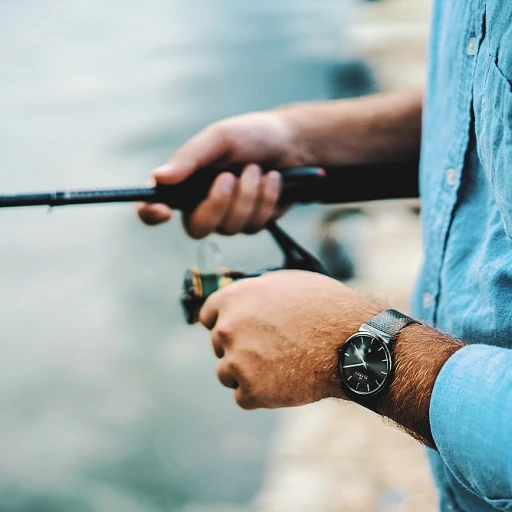The tale of Scott Enloe and his world record lake trout
Scott Enloe: A Legendary Catch
In May 2023, the fishing community was abuzz with excitement as Scott Enloe and his son, Hunter Enloe, made headlines. Fishing at Colorado's Blue Mesa Reservoir, these two set out on what would become an unforgettable journey. Armed with passion and perseverance, they hooked and landed what is believed to be a world record lake trout, weighing a staggering 73 pounds and showcasing an impressive 38-inch girth.
From Father to Son: The Passing of Passion
Fishing runs deep in the Enloe family. Hunter, Scott’s son, shares the same fervor for the sport, a passion that was instrumental in their record-breaking feat. With Scott holding the fishing rod and Hunter securing the net, the duo exhibited exemplary teamwork and devotion, making this catch as much about family bonds as it was about fishing prowess.
The Magnificent Blue Mesa Reservoir
Located in the scenic Gunnison County, Blue Mesa Reservoir is renowned for its potential to yield giant trout. This expansive body of water has been a favored fishing spot for many enthusiasts. Rich in aquatic life, the reservoir offers ideal conditions for trout to thrive, growing to massive sizes. For more about legendary fishing spots, check out this post.
International Game Fish Association: Authenticating Records
To ensure the veracity of their extraordinary catch, Enloe submitted their trout to the International Game Fish Association (IGFA). The IGFA is the global authority in the documentation and annals of fishing records. Their thorough verification process adds a crucial layer of authenticity to any claim, making Scott and Hunter’s achievement even more credible.
The Weight of a Legend
The lake trout’s confirmed weight and dimensions left the fishing world in awe. This wasn’t just a fish; it was an embodiment of skill, expertise, and the unpredictable magic of the sport. Such monumental catches fuel the dreams of every angler, hoping to witness or replicate similar moments of pure triumph and joy.
Unveiling the secrets of Great Bear Lake's giant trout
Unveiling the secrets of Great Bear Lake's giant trout
Great Bear Lake in Canada's Northwest Territories is a hallowed ground for serious anglers around the globe. Known for its jaw-dropping scenery and untouched waters, it's one of the premier spots to hook enormous trout. Some of the biggest lake trout ever caught hailed from this pristine location, including the legendary 72-pounder hauled in by Lloyd Bull in 1995—an IGFA world record for years. For more on the allure of golden fish in recreational fishing, click here.
Great Bear Lake is not just known for one-off catches, but for consistently producing massive fish. Experts like Scott Enloe and his son have made pilgrimages to these frigid waters, hoping to break the elusive 80-pound mark. This vast lake's unique ecosystem creates the ideal conditions for trout to grow to such immense sizes. According to research, the combination of cold water temperatures, ample food supply, and minimal human interference allows these trout to reach their full potential.
Another highlight is the gear end tackle world record chasers use in these waters. Heavy-duty rods, high-test lines, and specialized lures like the ones produced by brands including Abu Garcia and Okuma are standard. These are designed to withstand the brutal fights these giant fish put up. When tackling these monsters, precision, patience, and proper equipment are paramount.
Scientific studies have shown that lake trout in Great Bear Lake weigh significantly more than those in other bodies of water. The cold temperatures slow their metabolism, effectively making them more efficient predators. They are apex predators in these waters, often feeding on whitefish and other local species. Experts such as biologists from the International game fish association (IGFA) have delved into documenting and understanding these giant trout for years, contributing to a growing body of research about their elusive nature.
Fishing Great Bear Lake is an experience unlike any other. Imagine casting your line amidst the breathtaking backdrops and reeling in what could be the catch of a lifetime. Whether you're following in the footsteps of famous anglers or hoping to carve out your own slice of fishing history, the allure of Great Bear Lake's giant trout is undeniable. Who knows? The next IGFA record breaker might just be a cast away.
The science behind record-breaking trout sizes
The biological edge: genetics and growth rates
If you ever wondered why some trout grow larger than others, it all boils down to genetics and growth rates. Scientists have demonstrated that genetics play a critical role in determining a trout's potential size. For instance, brook trout (Salvelinus fontinalis) and brown trout (Salmo trutta) both exhibit significant variations in size, which can often be traced back to their genetic makeup.
According to a study by the U.S. Geological Survey, environmental factors such as water temperature, food availability, and habitat conditions can influence growth rates, but a trout's genetic code is ultimately the blueprint for its maximum size potential. Genetic studies have shown that certain strains of trout naturally grow larger; for example, the Gerrard strain of rainbow trout in Canada is renowned for its immense size.
Feeding habits and food sources
Feeding habits are another key factor in achieving record-breaking sizes. Larger trout tend to have more diverse diets and often consume higher-calorie prey. Lake trout (Salvelinus namaycush), for example, are known to feed on smaller fish species such as whitefish and ciscoes, thus allowing them to accumulate the necessary energy reserves to grow substantially.
In contrast, pharmacological differences can be observed within different water bodies. Great Bear Lake, for instance, supports an abundance of high-fat content prey, contributing to the significant sizes of trout inhabiting its waters. Studies have shown that up to 70% of a lake trout's diet in such environments may consist of fish, leading to their colossal size.
Environmental conditions and habitat
The natural habitat of a trout also greatly influences its size. For example, Blue Mesa Reservoir in Colorado is known for producing record-breaking lake trout, largely due to its pristine environment and rich food sources. The lake's deep, cold waters provide an ideal habitat for trout to thrive and reach substantial sizes. According to biologists at the Colorado Parks and Wildlife, consistent water quality and ample prey populations like kokanee salmon and suckers enable trout to grow considerably larger than in less hospitable environments.
Age and longevity
Age is another element that can’t be ignored when it comes to record-breaking trout sizes. A trout's longevity impacts its growth; older fish naturally have more time to attain significant weights. For instance, a lake trout can live up to 25 years, giving it ample time to reach a record weight.
Scott Enloe's world record trout, caught in Blue Mesa Reservoir, was an exceptional example of this phenomenon. This lake trout was aged to be around 20 years old, demonstrating the correlation between age and size. This correlation was further supported by historical catch data from International Game Fish Association, which shows that many world record trout are, in fact, elder fish.
Scientific advancements: tracking and conservation efforts
Scientific advancements in tracking and conservation have also played a pivotal role in preserving large trout populations. Tagging and monitoring projects, like those conducted by the U.S. Fish and Wildlife Service, have provided valuable data on trout movements and behaviors. These efforts have led to improved management practices, ensuring that future generations of anglers will continue to have the opportunity to hook record-breaking fish.
Sources like the International Game Fish Association provide updated catch records, data analysis, and conservation strategies that aid in the sustainability of large trout populations. Accurate records and ethical fishing practices help maintain healthy ecosystems and safeguard the future of trophy trout fishing.
For more in-depth insights, check out our blog post on the biggest fish ever caught to uncover even more about legendary catches and what makes them possible.
Top gear and tackle for catching record trout
Gear and tackle selection tips from the pros
When angling for the hefty giants, the tools in your hand make all the difference. Veterans like Scott Enloe emphasize the significance of choosing the right gear to bring in the big ones. Let's break down what you need.
Rods: the backbone of your setup
A high-quality rod is essential. Enloe favors the Okuma series. These rods offer the strength needed to handle powerful trout and the sensitivity to feel even the slightest nibble. Length is also crucial, with many experts recommending at least a 7-foot rod for better control and cast distance.
Reels: where precision meets power
Reels must be tough, with a smooth drag system. Enter the Abu Garcia Revo series, which combines durability with precision engineering. The Revo's drag system can withstand the fight of a record-breaking trout without falter—an attribute repeatedly praised by seasoned anglers.
Line: don’t skimp here
Your fishing line connects you directly to your catch, making it another critical component. Experts often opt for braided lines due to their high strength-to-diameter ratio. When targeting large lake trout, consider a 30 to 50-pound test line; GSO’s braided lines are a popular choice recognized for their reliability.
Lures: the bait of the legends
The type of lure used can vary, but time-honored options such as swimbaits and spoons still outperform many tech-driven alternatives. For a deep dive into the timeless effectiveness of lures, check out these lures that have stood the test of time.
Tackle box essentials: don't leave home without them
A well-stocked tackle box is filled with more than just hooks and sinkers. Including a variety of weights, swivels, and leader lines can make the difference between a successful outing and a regrettable 'one that got away' tale. Don't forget your line cutters, pliers, and knot-tying tool; efficiency is key when you’re out in the elements.
Personal touches: anglers share their secrets
Much of successful fishing comes down to experience and those unique tweaks every angler develops. Some swear by adding a touch of scent to their baits, while others prefer certain knots like the Palomar or Improved Clinch for their sheer holding power. Get creative and find what works best in your local conditions.
Invest in quality but don't break the bank
While it's essential to invest in quality gear, it doesn’t mean you need to buy the most expensive options. Companies like Okuma and Abu Garcia offer excellent mid-range products that perform like high-end gear.
In the end, it’s the blend of skill, knowledge, and the right equipment that brings these legendary catches to life. Remember, every angler has their preferences, so listen to diverse voices in the fishing community and experiment to find your ideal setup.
Famous trout fishing destinations around the world
Blue mesa reservoir: home of record-breaking lake trout
When thinking about legendary trout fishing spots, Blue Mesa Reservoir in Colorado often comes to mind. This expansive lake, the largest body of water in Colorado, has been the site of numerous incredible catches, cementing its reputation among anglers worldwide. One of the most noteworthy catches here was by Scott Enloe, who netted a lake trout weighing 73 pounds. Such feats make Blue Mesa a bucket-list destination for those seeking to break records.
The magic of great bear lake in Canada
Moving north, Great Bear Lake in Canada's Northwest Territories is another hotspot for trout enthusiasts. This pristine lake holds some of the largest lake trout ever recorded, including the famous fish that weighed in at 72 pounds. It's no wonder that anglers come from far and wide to try their luck in these icy waters. And while it's not just about breaking records, the sheer size of the catches here can make any fishing trip a memorable one.
Exploring the rivers and lakes of Colorado
While Blue Mesa Reservoir is the crown jewel, Colorado is dotted with other amazing fishing spots. The Gunnison River, for instance, is famous for its large brown trout. Add the picturesque settings and you have a recipe for the perfect fishing trip. Another noteworthy spot is Lake Diefenbaker. Though it’s technically in Canada, it’s worth mentioning for its world record rainbow trout weighing 48 pounds.
Famed lakes of the northwest territories
It’s not just Great Bear Lake in the Northwest Territories that attracts anglers. The region is replete with lakes teeming with massive trout. One notable catch from this area includes a 59-pound lake trout, furthers adding to its reputation. The wild, untouched nature of these lakes offers a unique adventure for fishing enthusiasts.
West coast wonders: a fishing paradise
The West Coast of both the US and Canada offers a wealth of trout fishing opportunities. Specifically, the rivers and lakes in this area are famous for their substantial brook trout and brown trout populations. Imagine casting your line in a serene lake, surrounded by mountains, and reeling in a catch that could turn into a record-holder. This region embodies the essence of what makes fishing an exhilarating experience.
The role of the International Game Fish Association (IGFA)
Setting the benchmark: IGFA's role in record trout validation
The International Game Fish Association (IGFA) stands as the recognized authority when it comes to validating the legitimacy of record-breaking trout. Established in 1939, the IGFA not only standardizes the rules for record submissions but also ensures the accuracy and credibility of these records.It's not an easy feat to get a trout recognized as a world record. Anglers need to meticulously document their catch, providing evidence such as photographs, video footage, and witness testimonies. The fish must be weighed on certified scales and measured with precision, typically down to the nearest ounce. For example, the lake trout caught by Scott Enloe which weighed an impressive 73 pounds wasn't simply a matter of pride; it needed IGFA's verification for it to be officially recognized.
Historical significance and evolution
The history of the IGFA is filled with legendary figures and monumental catches that have shaped recreational fishing. One significant example is Lloyd Bull's 72-pound lake trout caught in 1995 at Great Bear Lake in Canada's Northwest Territories. This record stood for decades and brought immense attention to trout fishing in cold, deep waters. The lake's pristine environment has been a recurring theme in many record-breaking catches, further cementing its reputation among fishermen worldwide.But the IGFA's role goes beyond just keeping records. They actively promote conservation efforts and ethical fishing practices, ensuring that the major regions known for producing giant trout, like Blue Mesa Reservoir in Colorado or Great Bear Lake in Canada, remain thriving habitats for these fish. The organization's mission intertwines the thrill of achieving a world record with the responsibility of sustainable fishing.
Standardization and fairness in record-keeping
The IGFA's meticulous standards ensure a level playing field for all anglers. This involves setting specific guidelines on acceptable fishing methods, permissible gear, and even the types of bait or lures that can be used. Such stringent rules eliminate any potential for unfair advantages and ensure that every world record trout has been caught through skill and perseverance.This is particularly important when dealing with high-profile records like that of Scott Enloe's catch at Blue Mesa Reservoir. Detailed records and validation checks by IGFA experts Anthony Shaffer and Mike Myatt ensure the transparency and validity of these monumental catches. They're not just about capturing the biggest trout; they're about doing it with integrity and respect for the sport.
Controversies and debates
No major organization is without its controversies, and the IGFA has had its share. Some anglers have questioned their stringent record-keeping practices, citing the intense scrutiny and detailed documentation required. Case in point, the brook trout caught by Donald Walker that resulted in long debates before it was accepted as a state record.These debates often revolve around the difficulty of adhering to IGFA standards in real-world fishing scenarios. Despite such challenges, the IGFA remains the gold standard for world record fish validation, maintaining the integrity and excitement of chasing those legendary catches.
The importance of the IGFA in the realm of world record trout fishing can't be overstated. They bring structure, credibility, and historical significance to the sport, making each record not just a personal achievement, but a win for the angling community at large. For further insights on legendary catches and the most iconic fishing spots worldwide, check out this guide.
Personal stories from record-holding anglers
Hunter enloe's breathtaking tale
Let’s start with an unforgettable fishing trip by Hunter Enloe. Following in the footsteps of his father, Scott Enloe, Hunter showcased his fishing prowess when he reeled in a spectacular lake trout. Hunter laid eyes on a trout at Colorado's Blue Mesa Reservoir that many anglers only dream of. His catch, stunningly impressive, weighed a whopping 53 pounds and measured over 50 inches long. Imagine the astonishment when this father son duo realized their giant fish might rewrite record books.
Such extraordinary catches do more than add names to the record books; they fuel our passion for fishing and inspire younger generations to follow in the footsteps of legends.
Mysteries around Lloyd Bull's brook trout
A long-standing story in the fishing community revolves around Lloyd Bull, who hooked a brook trout in Manitoba, Canada, in 1915. Weighed at over 14 pounds, this trout has sparked countless debates. Some skeptics argue about the validity of the fish’s weight. Yet, the giant brook trout remains a point of fascination and friendly disputes among anglers. These controversies only heighten the allure of catching a potential world record trout.
Scott Enloe's enduring legacy
Let's not forget Scott Enloe’s spectacular catch at Blue Mesa Reservoir. This game fish weighed pounds and held a striking inch girth. Capturing this record fish was more than just luck; it was a testament to Enloe’s dedication and refined skills honed over a lifetime of fishing. Scott's incredible feat even had Okuma and Abu Garcia buzzing about the tackle he used. Such instances drive anglers to push their limits, aiming for that once-in-a-lifetime catch.
Debates about Great Bear Lake catches
Then there’s the saga involving Great Bear Lake in Canada—a hotspot for massive trout weighing pounds. Donald Walker’s mind-boggling trout from Great Bear Lake stirred the pot when some records and measurements were questioned. It’s these debates that make the fishing community so enthralling, as anglers from America to the Northwest Territories continuously strive for undeniable proof and recognition from the International Game Fish Association (IGFA).
Donald Walker’s experience in Blue Mesa Reservoir
Donald's unforgettable catch has kept the fishing world buzzing. This reservoir has gained a reputation akin to the legendary Great Bear Lake. Some argue that fishing in America presents its own unique challenges, making those record-breaking catches even more rewarding.
Debating record-breaking with the IGFA
The role of the International Game Fish Association in validating these records cannot be overstated. Yet, their rigorous standards sometimes ignite debates. For instance, catches at Lake Diefenbaker by anglers using cutting-edge gear from fishing giants like Abu Garcia often prompt discussions on the fairness of the record validations. These debates ensure that each record serves as an inspiration for the next generation and a benchmark for aspiring anglers worldwide.
Inspirational stories from the west coast
Beyond controversies and debates, record-breaking stories from the West Coast of America evoke inspiration. Anglers at the Blue Mesa Reservoir, for example, often look up to stories from veterans like Lloyd Bull and Scott Enloe, igniting a fiery passion for fishing that spans generations. These tales of record-breaking trout yield a sense of community and mutual obsession with tracking down the next big catch.

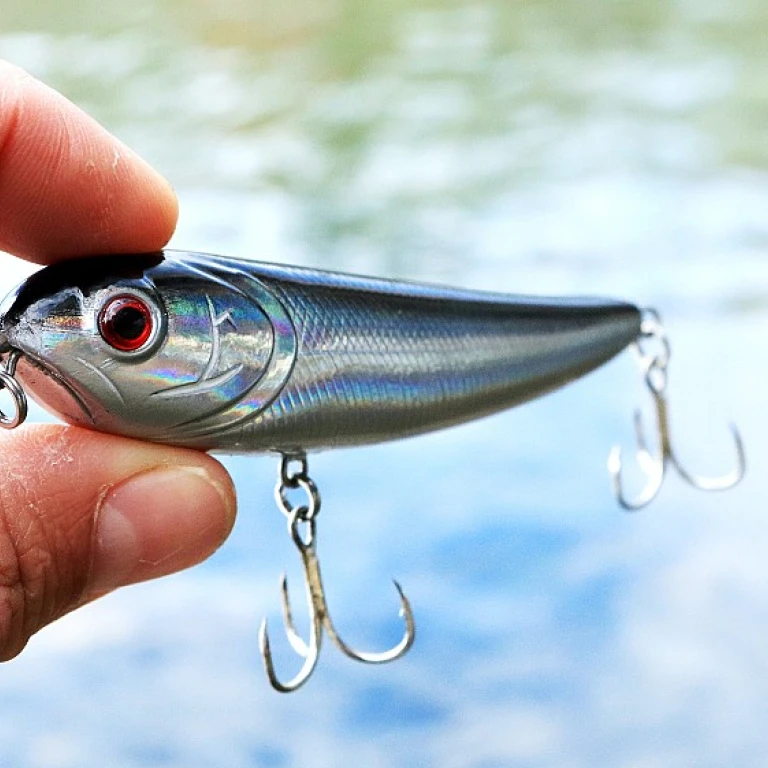
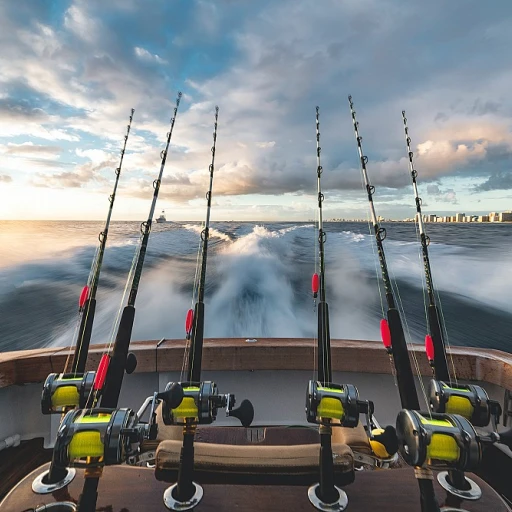
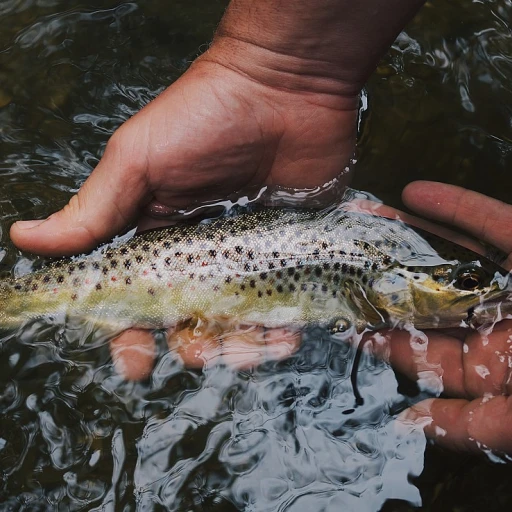
-large-teaser.webp)
